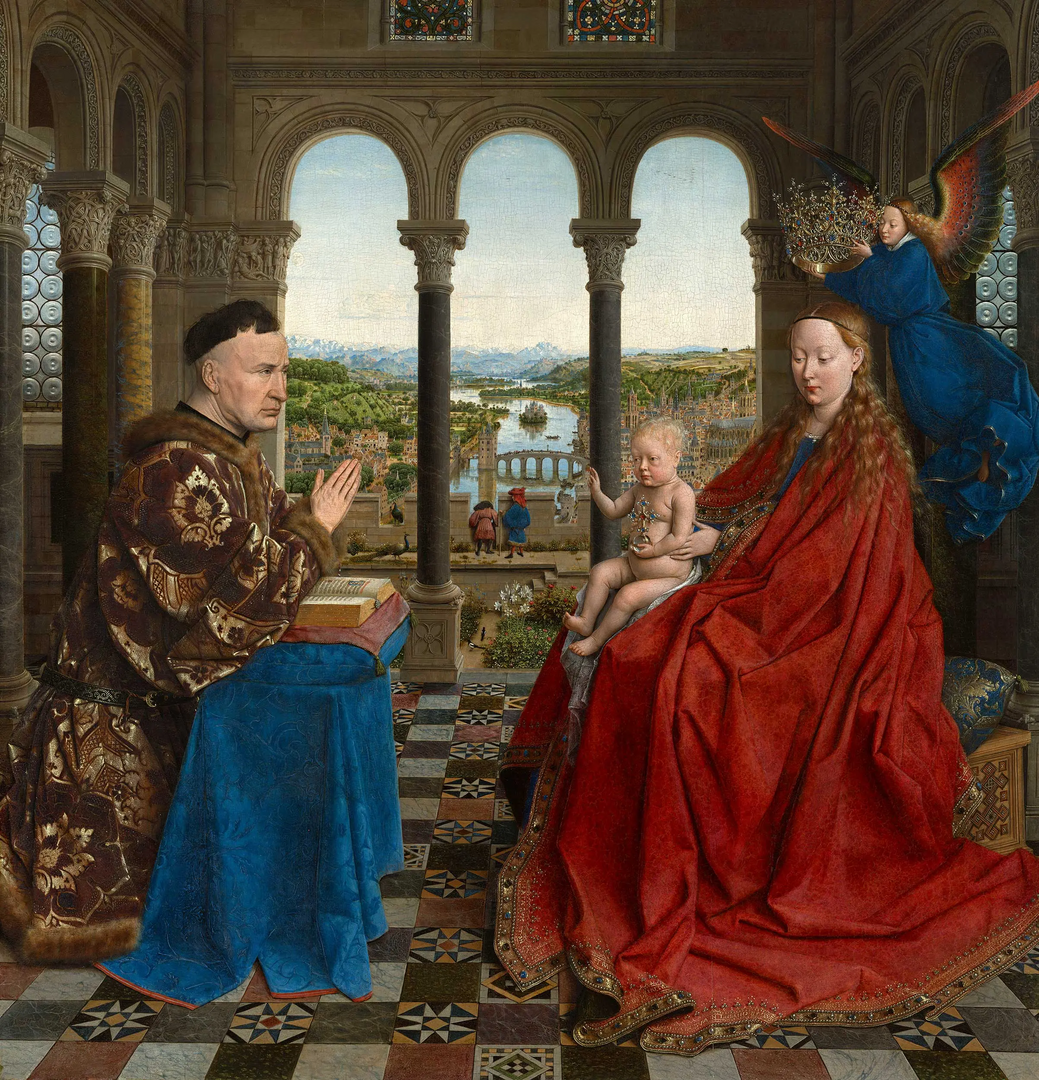A New Look at Jan van Eyck: The Madonna of Chancellor Rolin
Jan van Eyck, The Madonna of Chancellor Rolin, ca. 1435, Musée du Louvre, Paris.
To celebrate the historic conservation work carried out on Jan van Eyck’s masterpiece – the first intervention of its kind since the painting entered the museum in 1800 – the Louvre has dedicated the first spotlight exhibition to be held in the Salle de la Chapelle since 2014 to Chancellor Rolin in Prayer before the Virgin and Child, also known as the Madonna of Chancellor Rolin. The layers of oxidised varnish that had darkened the paint were stripped away, restoring the work to its former glory.
This intervention reflects the current interest in Van Eyck’s oeuvre, following the conservation treatment of the Ghent Altarpiece. For almost ten years now, a number of international and cross-disciplinary exchanges have led experts to raise many new questions on the subject. The Louvre wishes to show audiences how the analyses carried out at the Centre for Research and Restoration of the Museums of France, and the conservation work itself, have challenged our previous assumptions about the piece, long known as the Virgin of Autun.
Many aspects of this painting – less well known than it should be for such a major work of Western art – may seem difficult to understand. For this reason, the exhibition will be built around a series of questions designed to draw the viewer in: for what purposes(s) did Van Eyck create this very unusual work for Nicolas Rolin? Why is the background landscape so miniaturised as to be almost invisible? How should we interpret the two small figures in the garden? What are the connections between this painting, the art of illumination and funerary bas-reliefs? Do we know how the artists of the 15th century interpreted the work? The Rolin Madonna illustrates the tensions between medieval tradition and revolutionary experimentation that pervaded Flemish art in the first third of the 15th century.
The Louvre’s investigation of the Madonna of Chancellor Rolin has included comparison with other paintings by Van Eyck, as well as with works by Rogier van der Weyden, Robert Campin and the great illuminators of the time. Some sixty painted panels, manuscripts, drawings, bas-reliefs and precious metal artefacts will be brought together for this exhibition, made possible by the support of many museums and institutions in France and abroad, including the Städel Museum in Frankfurt (which is lending the Lucca Madonna for the first time), the Gemäldegalerie in Berlin, the Royal Library in Brussels, the Morgan Library & Museum in New York and the Philadelphia Museum of Art.
